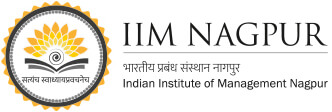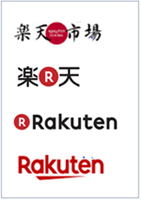“Ah! I’m training to be better at a job I hate!” says a girl to her friend in one of the episodes of my favourite TV show, and the first thought that struck me was, “Hey… I know that feeling!”. Trained as a coder, happy as a writer, I am now a student of business studies. As I was thinking about this, I looked back to my days as a software engineer and recalled a particular incident.
It was a typical Monday morning, and people were returning to their routine lives after the weekend. Everybody loves weekends. It’s the time when we go back to being ourselves for a while and recharge our batteries. Some of us like to go out and have fun while some prefer staying indoors and resting. Some people find time to develop a new hobby or rejoice in the old ones. Traveling, shopping, boozing, sleeping, writing, partying, everyone has their own way of preparing themselves for the next five days of “work”. Won’t it be great if the weekend didn’t end? If we could do whatever it is, that makes us happy and get paid for it? If we didn’t have to be all “logical” while picking up a career path? I was still preoccupied with this stuff when one of my colleagues came back from a meeting with his manager.
Apparently, the poor guy had no “clarity of thought”, and all the work he had done during the previous week was nullified in just 15 minutes of the meeting. “What will you do now?”, I asked. “Look for another job, do something else!”, he replied, yet both of us knew the hollowness in those words. It was then that I asked him the question I was pondering over for so long.
“If I tell you that in this moment of time, you can be anything you wish to be, I give you all the resources you need for that, and you are free from all the expectations of your family and society, if money was not one of the driving factors for work, would you still be working in the same field?” It took him longer to understand the question than to find an answer. We are so used to living in the reality that we take time to comprehend if someone tells us to stop for a while and imagine a perfect world for a moment. “Travel…If only I could get paid for that,” he replied, turning back to his desktop.
As I asked the same question to my other friends, it turned out that traveling was the most voted for “hypothetically perfect profession”. Some wanted to see all the big cities of this world while some would love to go to the not-so-famous locations. Most people didn’t have a particular destination in mind when they chose traveling over their current job, but some were very particular in their answers, for example, one of the respondents wanted to go to the highest and lowest points on Earth.
Traveling was the most common, but not the only answer that I got. Meera (alias), who had been working in the IT sector for more than a year, said she would like to be a motivational speaker. “I would like to take up a job where I can actually inspire people and, may be, make a difference in their lives. Also, I want to do it because I know I am good at stuff like that,” she added as her fingers ran onto her keyboard.
Meera was one of those many people who wished to do something in their lives but were moving forward on an entirely different path. But I also found some people whose dreams were not that different from the reality. Rajat (alias), for instance, wanted to be a game developer. He wished to make a game that would stay with his name when he was long gone. A similar example was Smita (alias), who, someday, wanted to be a big name in the field of cybersecurity. Rajat and Smita both were then working as assistant software engineers.
Unlike Rajat and Smita, others had a wide gap between where they were and where they wanted to be, and not being able to picture a way to reach the latter one had labeled it as a “childhood dream”. Such a list of unfulfilled dreams comprised joining the armed forces, being a pilot, starting a business of their own, getting into the Indian cricket team, and many more. But some people had still not stopped chasing their dream yet. Akash (alias), who wanted to be a social worker, was one of the most sought-after coders in his company. His then WhatsApp status read “Happy and content,” but he didn’t look content when he said that he was working on something and would probably change his field in a few months.
One of the answers that surprised me came from a person who, I always thought, loved his job as a coder. “I don’t want to do this work.” said Piyush (alias) as he turned his system off at 8:47 PM and knew that he’d be coming an hour before his usual time the next day. He wanted a simpler life where he could find time for himself. One more person who found it difficult to fit into the fast-moving life of NCR was Kuljeet (alias). Kuljeet came from a small town in Punjab and wished to go back to his home-town more than anything else in the world. “Oh jee, mujhe na achhi ni lagdi ye Dilli-NCR ki zindagi. Mujhe bass ek chhoti si 15-20 hazaar ki koi naukri mil jaye jo gharkepaas ho… (I do not want the Delhi-NCR life, if only I could find a job that pays 15-20 thousand rupees but let’s me be close to home…)” says Kuljeet who had been working in NOIDA for nearly two years and was earning way more than the “15-20 hazaar” he yearned for. That, I must say, was the most heart-breaking answer I got.
The point is, all the people I asked had their own dreams, and a majority of people wanted to do something entirely different from what they were doing. If only, the imaginary situation presented to them was real and their heart and intuition were the only driving forces.
The question I had started asking just for fun and out of a little curiosity made me realize that “logical thinking” has killed more dreams than anything else. We all have that stack of dreams lying in the corner of our hearts, waiting to be chased. If only, it was that easy to take the road not taken.


 As part of the International Immersion Program at IIM Nagpur, we recently visited the Rakuten headquarters in Tokyo. We were privileged to have an insightful discussion with Mr Masatada ‘Seichu’ Kobayashi (Seichu San), co-founder and Chief Well-Being Officer, Rakuten and Nalini George, Chief People Office, Rakuten India on the cultural changes that Rakuten has seen in the last decade, and how it has impacted the organization. One of the most critical aspects of the discussion revolved around the importance of branding in a company’s life-cycle, especially when the organization is going through diversification and rapid growth globally. Below given are the key pointers about the evolution of Rakuten’s logo and how it was in sync with the growth strategy of the organization.
As part of the International Immersion Program at IIM Nagpur, we recently visited the Rakuten headquarters in Tokyo. We were privileged to have an insightful discussion with Mr Masatada ‘Seichu’ Kobayashi (Seichu San), co-founder and Chief Well-Being Officer, Rakuten and Nalini George, Chief People Office, Rakuten India on the cultural changes that Rakuten has seen in the last decade, and how it has impacted the organization. One of the most critical aspects of the discussion revolved around the importance of branding in a company’s life-cycle, especially when the organization is going through diversification and rapid growth globally. Below given are the key pointers about the evolution of Rakuten’s logo and how it was in sync with the growth strategy of the organization.